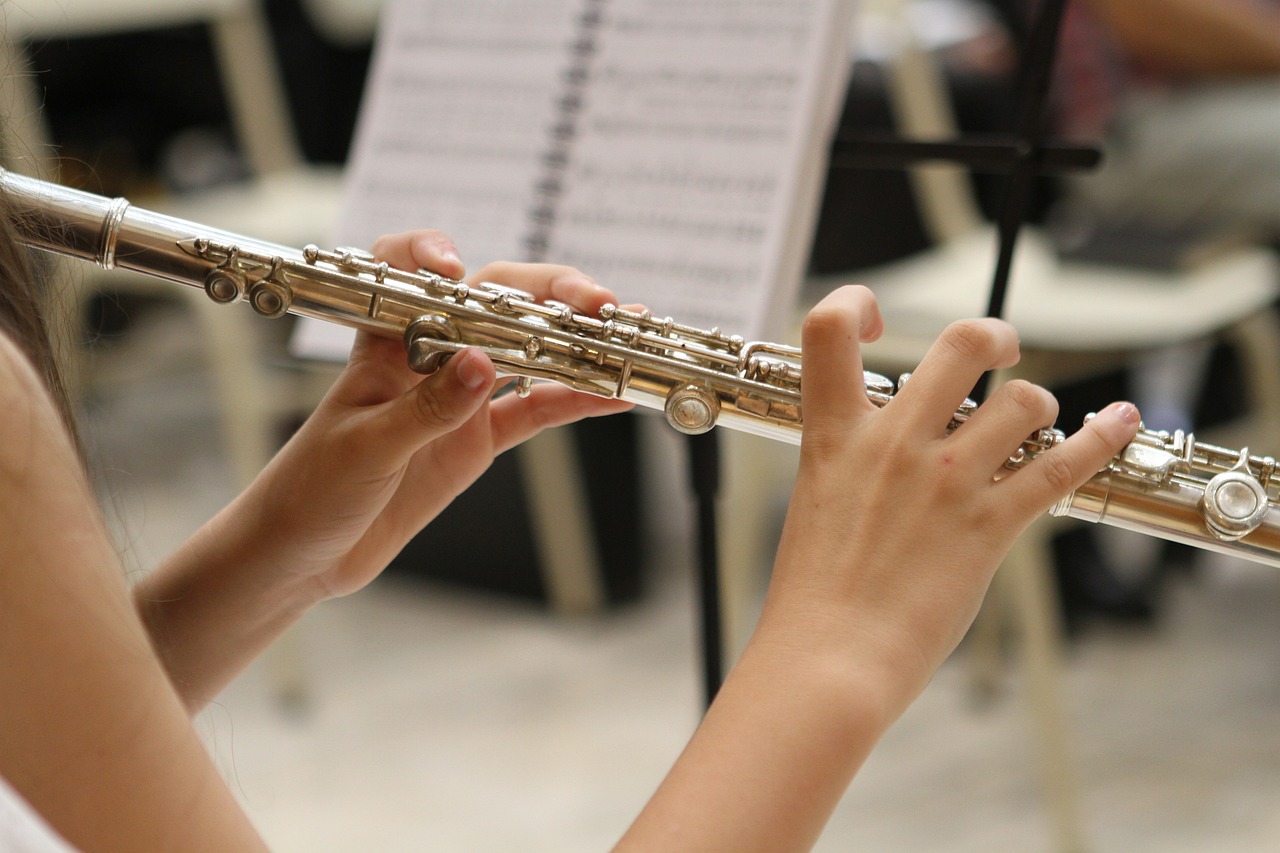The flute is a musical instrument that belongs to the woodwind family. It is a slender, cylindrical tube made of metal, wood, or plastic, with a small hole at one end and a series of finger holes along its length. To play the flute, the musician blows into a small opening at the top of the instrument and covers or uncovers the finger holes with their fingers to produce different notes. (Also Read: How Long it Takes to Learn PHP)
How many types of flutes are there?
Concert flute: The concert flute is a popular type of flute that is used in classical music. It is a metal or wooden instrument with a silver or gold finish, and it has a range of about three octaves.
Alto flute: The alto flute is a type of flute that is pitched in the key of G and has a lower range than the concert flute. It is often used in orchestras and wind ensembles.
Bass flute: The bass flute is a larger version of the concert flute that is pitched an octave lower. It has a deep, rich sound and is often used in classical and contemporary music.
Piccolo: The piccolo is a small, high-pitched flute that is pitched an octave higher than the concert flute. It is often used to add brightness and clarity to a musical ensemble.
Pan flute: The pan flute is a type of flute that is made up of a series of tubes of varying lengths, which are played by blowing across the open ends. It is often associated with folk music and has a distinctive, bright sound.
Native American flute: The Native American flute is a type of flute that is traditionally played by Native American cultures. It is made of wood and has a distinctive, haunting sound.
How do you play the flute?
Get comfortable with the flute: Hold the flute horizontally, with the mouthpiece near your lips and the finger holes facing upwards. Make sure that you are seated comfortably and that you have enough space to move your fingers.
Place your lips on the flute’s mouthpiece: The flute’s mouthpiece is the small opening at the top of the instrument. To produce a sound, you need to blow a steady stream of air across the mouthpiece. Place your lips on the mouthpiece and keep them relaxed.
Practice blowing air across the mouthpiece: To produce a sound on the flute, you need to blow a steady stream of air across the mouthpiece. Practice blowing air across the mouthpiece and trying to control the sound with your breath. You should feel a slight resistance as the air passes through the mouthpiece.
Cover the finger holes: To produce different notes on the flute, you will need to cover or uncover the finger holes with your fingers. The fingerings for each note are written on the sheet music, and you can also find charts online that show the fingerings for different notes. Place your fingers on the finger holes and practice covering and uncovering them to produce different notes.
Practice playing melodies: Once you are comfortable producing a sound and covering the finger holes, you can start practicing simple melodies. Choose a piece of music that is within your skill level and start by playing one note at a time. Gradually increase the tempo and try to play the melody smoothly and on time.
Work with a teacher: If you are just starting out, it can be helpful to work with a teacher who can provide guidance and feedback. A good teacher can help you develop good technique and can also introduce you to different styles of music that are suitable for the flute.
By following these steps and practicing regularly, you can learn to play the flute and become proficient at this beautiful and expressive instrument.
How long does it take to learn flute?
To become proficient at playing the flute, it is important to practice regularly and to work with a skilled instructor who can provide guidance and feedback. It can also be helpful to start with the basics, such as learning how to produce a good sound and how to read sheet music, before moving on to more advanced techniques.
As you progress, you may find that some concepts and techniques come more easily to you than others. It is important to be patient with yourself and to keep practicing even when it feels challenging. With time and dedication, you can become proficient at playing the flute.
What are the advantages of learning to play the flute?
Improved cognitive skills: Research has shown that learning to play a musical instrument can improve cognitive skills such as memory, spatial-temporal skills, and problem-solving abilities.
Increased coordination: Playing the flute requires coordination between the hands, the lips, and the breath, which can help improve overall coordination and dexterity.
Improved mood and stress reduction: playing the flute can be a relaxing and enjoyable activity that can help reduce stress and improve mood.
Increased self-esteem and self-confidence: As you progress in your flute playing, you may find that you become more confident in your abilities, which can lead to increased self-esteem.
Sense of accomplishment: learning to play the flute takes time and dedication, and as you become more proficient, you may feel a sense of accomplishment and pride in your achievements.
Opportunity to participate in a group: Many people enjoy the social aspect of music, and learning to play the flute can provide an opportunity to join a group or ensemble and make new friends.
How much does a good flute cost?
Here are a few factors that can affect the cost of a flute:
Material: Flutes can be made of various materials, such as metal, wood, or plastic. Metal flutes tend to be more expensive than plastic flutes, and wooden flutes can be more expensive than either metal or plastic flutes.
Brand: Different brands of flutes can vary in price. Some well-known brands, such as Yamaha and Pearl, tend to be more expensive than other brands.
Quality: The quality of a flute can affect its price. Higher-quality flutes are typically made with more precision and attention to detail, which can make them more expensive.
Type: Different types of flutes, such as concert flutes, alto flutes, and bass flutes, can vary in price.
Conclusion
To become proficient at playing the flute, it is important to practice regularly and to work with a skilled instructor who can provide guidance and feedback. With time and dedication, you can become proficient at playing this beautiful and expressive instrument. (Also Read: How Long Does it Take to Learn to Play Piano)












